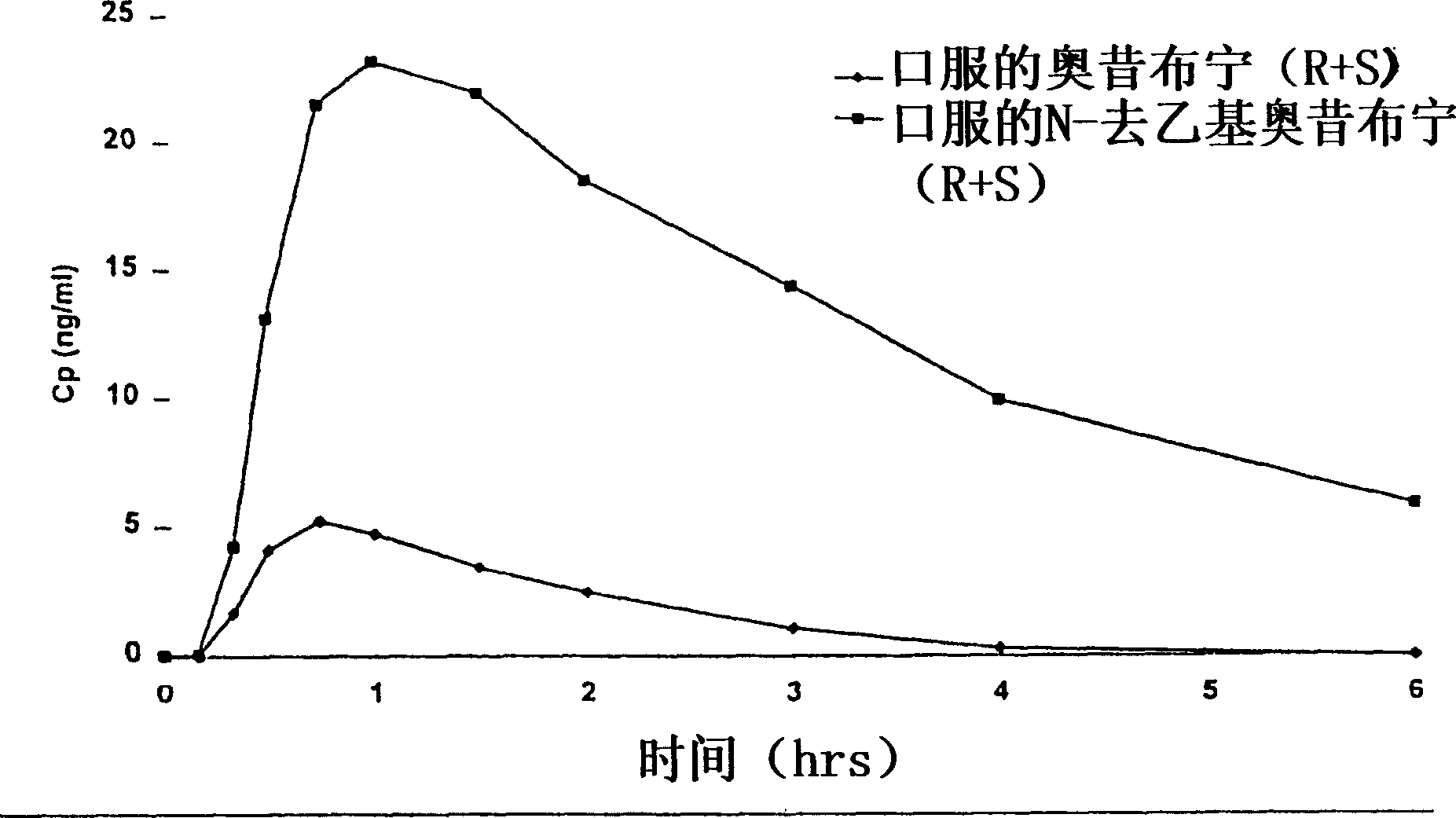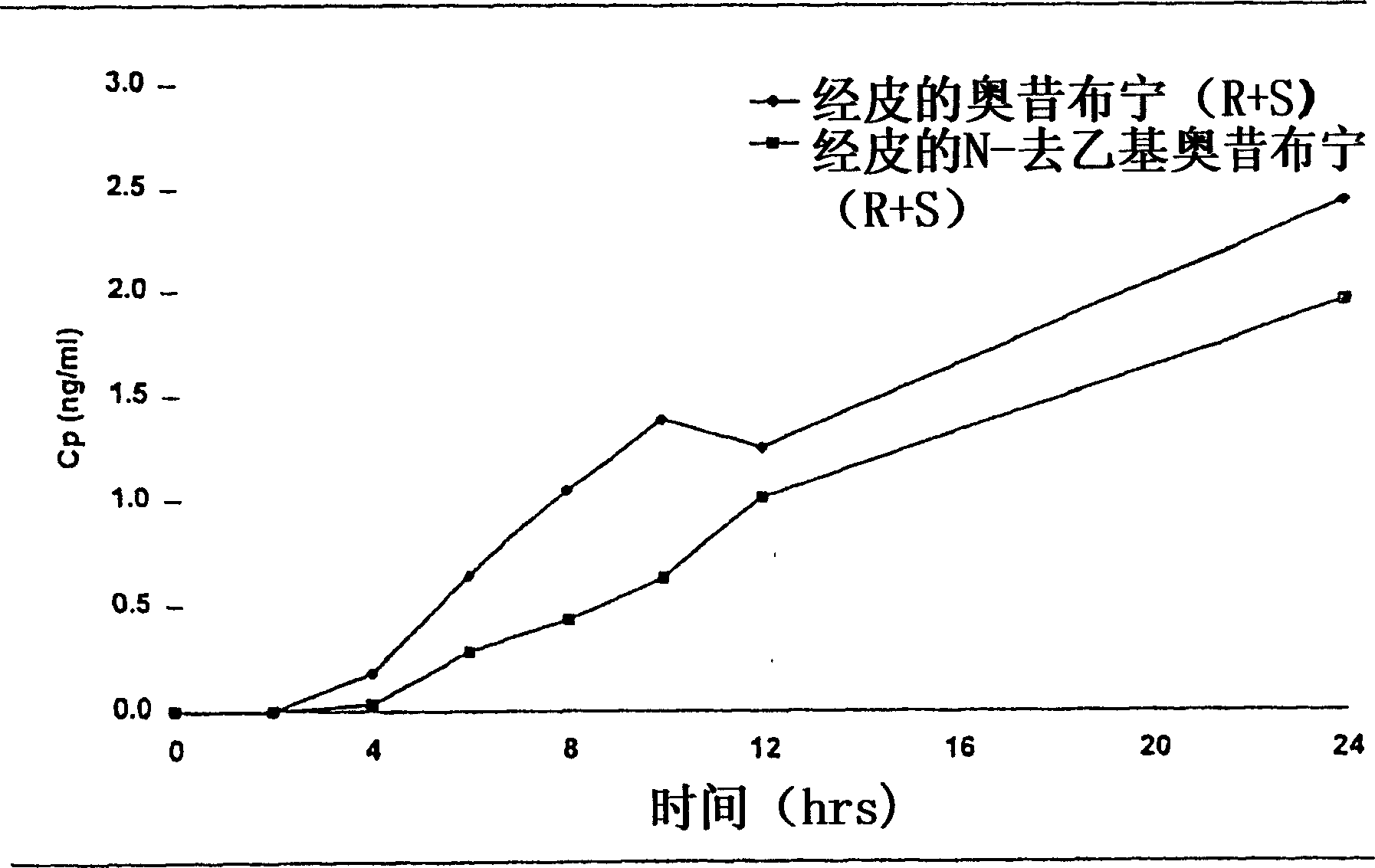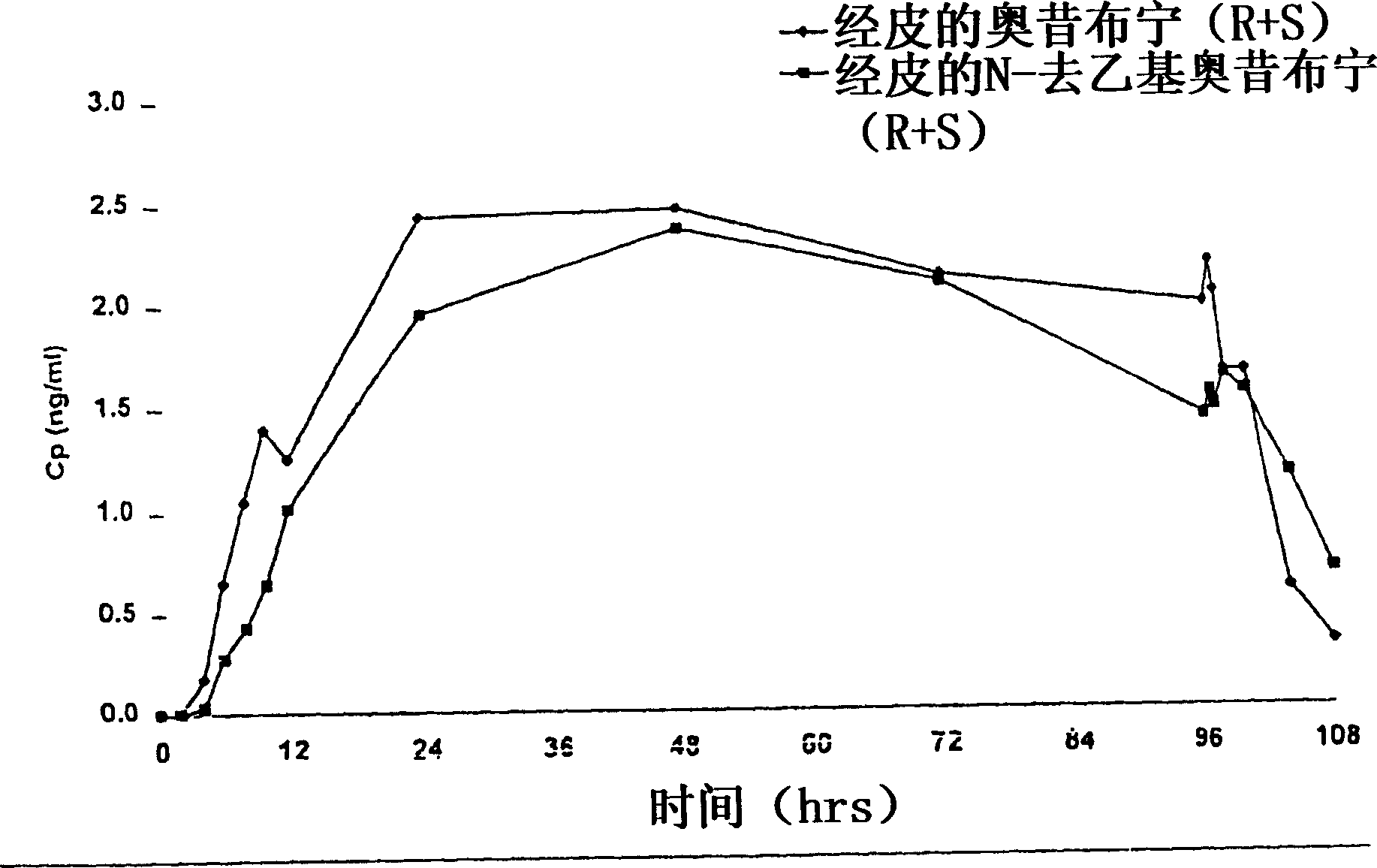Compositions and methods for transdermal oxybutynin therapy
A chloride, topical application technology, applied in the direction of drug combination, drug delivery, pharmaceutical formulation, etc., can solve the problem of patient interruption of treatment
- Summary
- Abstract
- Description
- Claims
- Application Information
AI Technical Summary
Problems solved by technology
Method used
Image
Examples
Embodiment 1
[0153] Embodiment 1: preparation oxybutynin sticky matrix patch
[0154] The parenteral oxybutynin delivery devices used in the above clinical studies were 13 and / or 39 cm 2 transdermal adhesive matrix patch. General methods for making transdermal adhesive matrix patches are described in US Patent Nos. 5,227,169 and 5,212,199, which are incorporated herein by reference in their entirety. According to this general method, the preparation of the oxybutynin patch of the present invention is as follows:
[0155] Oxybutynin free base, triacetin (Eastman Chemical Co., Kingsport, NY) and 87-2888 acryl copolymer binder (National Starch and Chemical Co., Bridgewater, NJ) were mixed into a homogeneous solvent , and using a two-zone coating / drying / lamination oven (Kraemer Koating, Lakewood, NJ) at 6 mg / cm 2 (dry weight) coating rates were coated onto a silicone-treated polyester spunbond substrate (Rexham Release, Chicago, IL) to obtain a final oxybutynin adhesive matrix containing ...
Embodiment 2
[0156] Example 2: Preparation of biodegradable microsphere storage injections of oxybutynin
[0157] According to the method of the present invention, biodegradable microspheres capable of sustained release depot injection can be used to deliver oxybutynin. Microspheres were prepared by the following method:
[0158] Poly-d,l-lactic acid ("PLA", Birmingham Polymers, Birmingham, Alabama) having a molecular weight of 12,000 was dissolved in methylene chloride to a final concentration of 20 wt%. Oxybutynin free base was dissolved in PLA solution to a final concentration of 4 wt%. Deionized water containing 0.1% Tween 80 was charged into a reaction vessel equipped with a water jacket (the temperature was controlled at 5° C.), and the reactor was equipped with a true boring stirrer and a Teflon turbine impeller (Teflon turbine impeller). ).
[0159] Add the oxybutynin / PLA / dichloromethane solution dropwise into the reaction vessel, and disperse the organic polymer phase into fi...
Embodiment 3
[0160] Example 3: Preparation of Topical Oxybutynin Formulations
[0161] According to the methods of the present invention, oxybutynin may be delivered using a topically applied oxybutynin-containing gel. General methods of preparing topical gels are well known in the art. According to this general approach, topical gels containing oxybutynin are prepared as follows:
[0162] Dilute 95% ethanol (USP) with water (USP, United States Pharmacopoeia), glycerin (USP) and glyceryl monooleate (Eastman Chemical, Kingsport NY) to obtain a percentage of ethanol / water / glycerin / glyceryl monooleate of 35 / Final solution on 59 / 5 / 1. Oxybutynin free base was then dissolved in the above solution to a concentration of 10 mg / g (mg / gram). The resulting solution was then gelled with 1% hydroxypropylcellulose (Aqualon, Wilmington, Delaware) to obtain the final oxybutynin gel. Apply 1-2g of the above gel topically to approximately 200cm of the chest, torso and / or arms 2 on the body surface ar...
PUM
 Login to View More
Login to View More Abstract
Description
Claims
Application Information
 Login to View More
Login to View More - R&D
- Intellectual Property
- Life Sciences
- Materials
- Tech Scout
- Unparalleled Data Quality
- Higher Quality Content
- 60% Fewer Hallucinations
Browse by: Latest US Patents, China's latest patents, Technical Efficacy Thesaurus, Application Domain, Technology Topic, Popular Technical Reports.
© 2025 PatSnap. All rights reserved.Legal|Privacy policy|Modern Slavery Act Transparency Statement|Sitemap|About US| Contact US: help@patsnap.com



